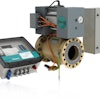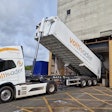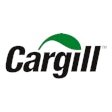
Chicken companies will need to focus on more than just improvements in feed sustainability to achieve net zero greenhouse gas pledges.
“There’s an interesting thing happening in corporate sustainability right now when it comes to agriculture, which is that there’s a lot of companies setting targets towards net zero. This is a very ambitious thing and I think a worthwhile thing to do, but there are some challenges,” Ben Putman, LCA manager, agriculture, Aligned Incentives, said.
“Looking historically at how the chicken industry has achieved improvements and significant gains over time in sustainability, I think the things that have gotten us to this point are going to be different than the things that are going to get us the rest of the way.”
Putman will explore how the industry will tackle the net zero challenge, what efforts are underway now and what progress we might expect by 2035 at the 2024 Chicken Marketing Summit.
What’s next for chicken industry sustainability?
Feed is typically considered one of the biggest contributors to greenhouse gas emissions in the poultry supply chain.
“We’ve seen a lot of improvement in the global warming potential of chicken production through improvements in crop yields, but we’re starting to see a plateau in crop yield,” explained Putman.
“The mindset certainly has to shift,” he added. noting that new technologies like regenerative agriculture and carbon sequestration could play a bigger role going forward in reducing greenhouse gas emissions in chicken production.
Attend the 2024 Chicken Marketing Summit
Make plans to attend the 2024 Chicken Marketing Summit at the Renaissance Birmingham Ross Bridge Golf Resort & Spa in Birmingham, Alabama, on July 29-31, 2024. This one-of-a-kind event will look forward to the consumer of 2035 and the issues that will impact their protein choices.
For the first time, the Summit will have two content tracks. As always, one track will focus on consumer trends of today and what will be expected in 2035 and how advancing digital technology will impact how chicken will be sold and marketed in the future. The second content track will explore how the industry will meet consumer expectations by adapting new and existing technologies to raise and process broilers utilizing fewer resources and with improved welfare, food safety and convenience.



















